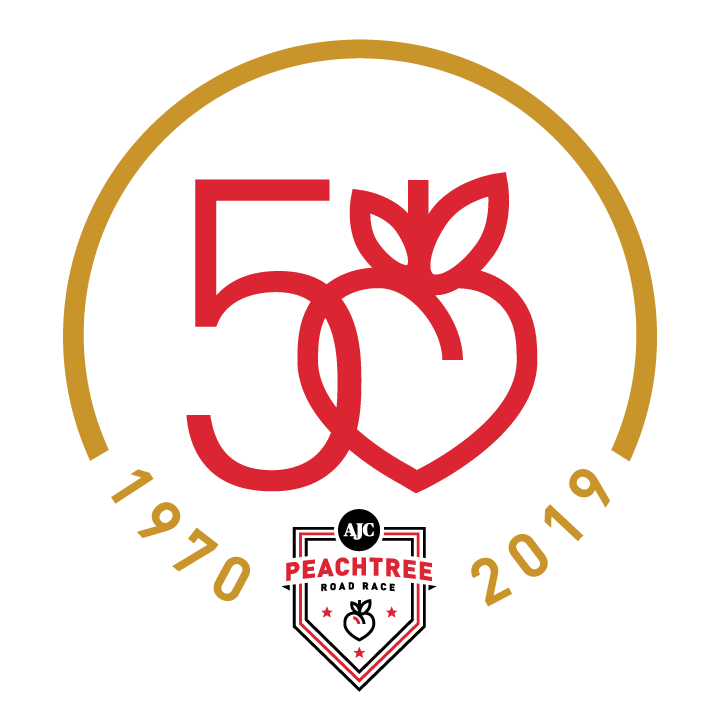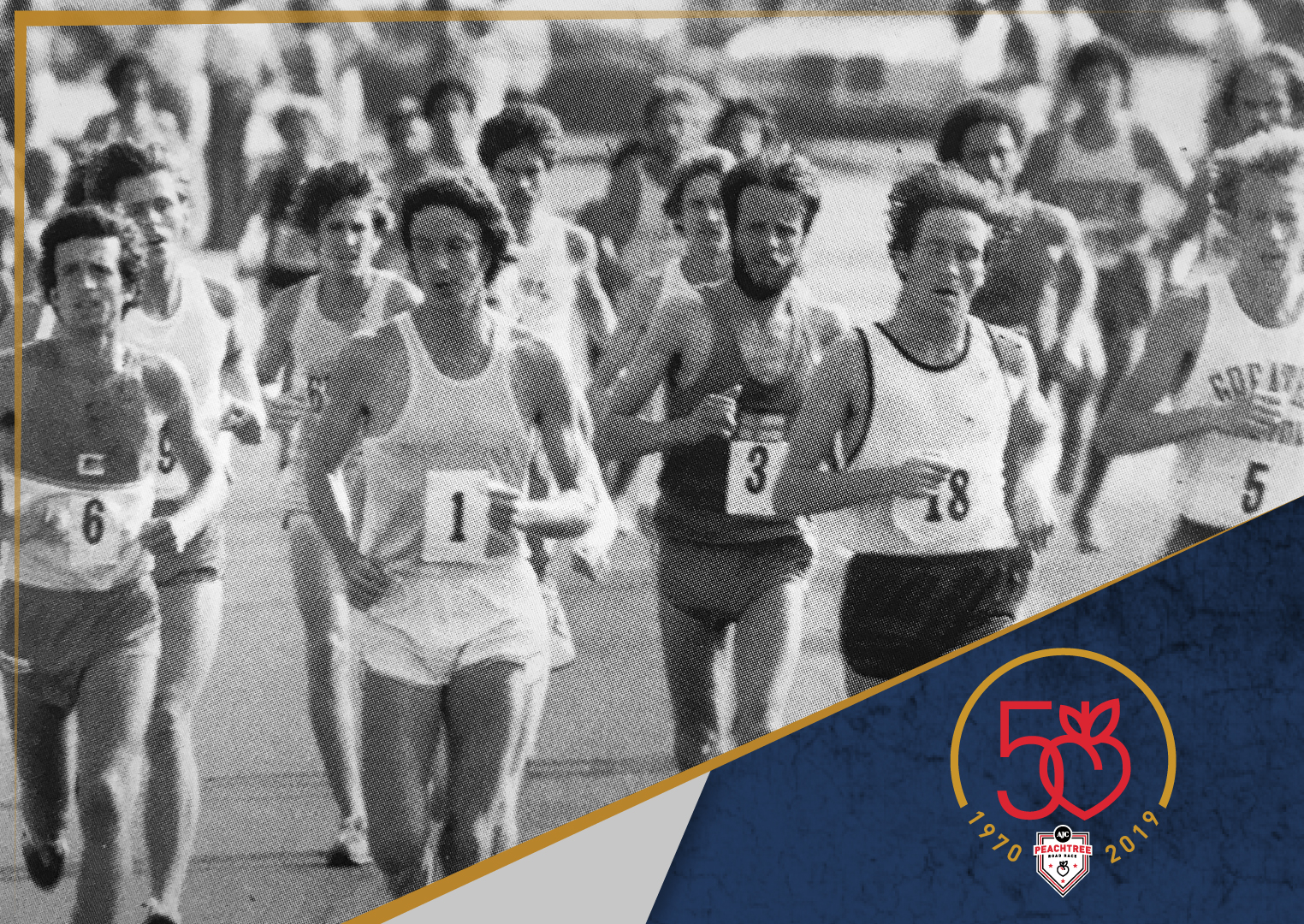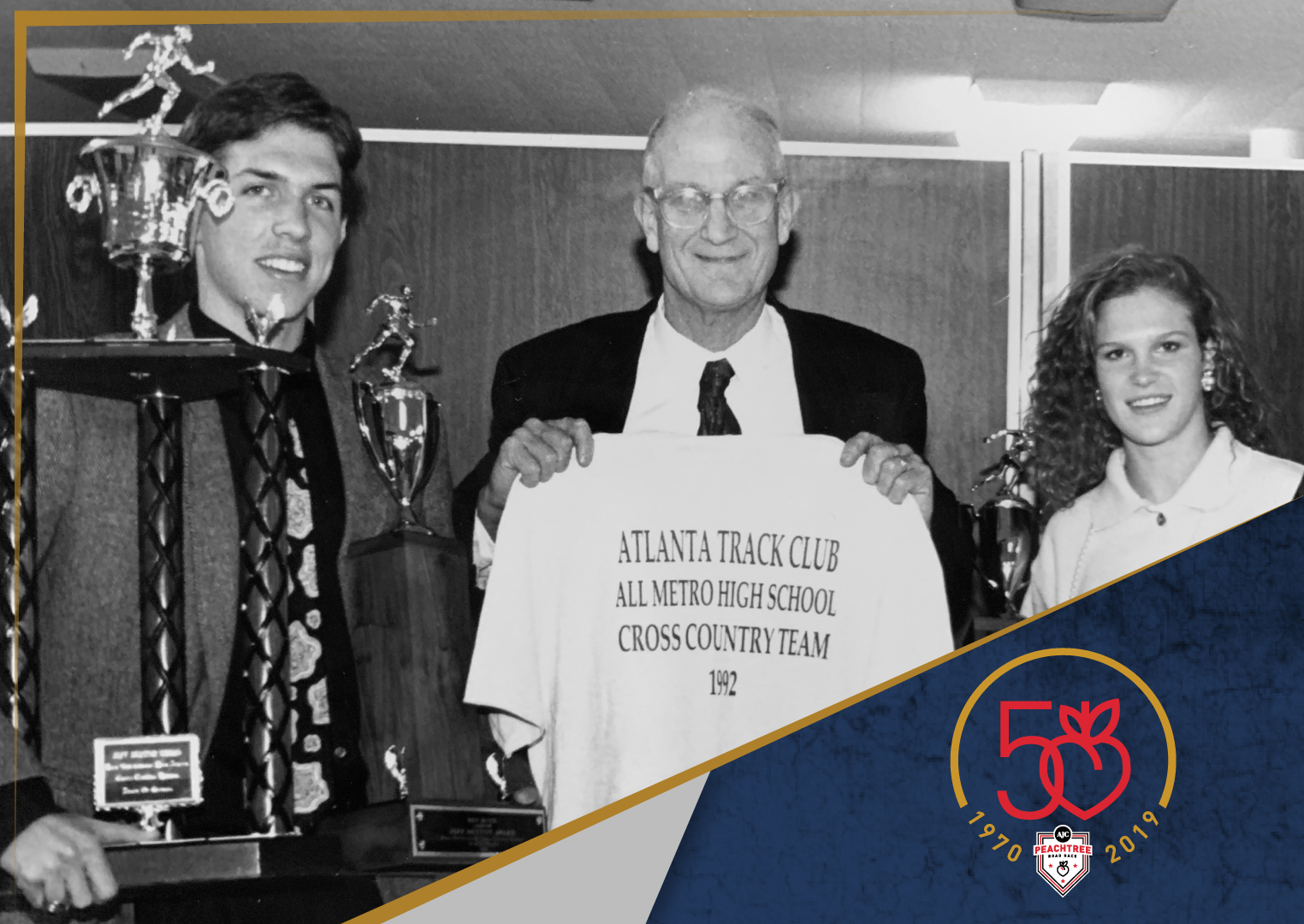Changing Course

Go straight down Peachtree until you see 10th Street. Take a left on 10th and then it’s a straight shot to the finish line. Anyone who has run the AJC Peachtree Road Race in the past 20 years knows these simple directions. But the current Peachtree course is much different than the race’s original route.
The start of the 1970 Peachtree. Tim Singleton is holding the bullhorn.
The Original Course (1970-1978)
Runners run an "official" 10K for the first time in 1974
The 150 runners who lined up for the first Peachtree stood at the intersection of Peachtree and Roswell Roads, about 1.5 miles from the race’s present-day start line. The race followed Peachtree Road to West Peachtree Street, then back to Peachtree Street before finishing at what was then Central City Park and is now called Woodruff Park, just past the intersection of Auburn Avenue. The course was originally measured using the odometer of race founder Tim Singleton’s station wagon. To get a more accurate measurement, the cross country coach at Georgia State recruited one of his athletes to come out and push a measurement wheel while he followed in his car. “It was Sunday morning. We started at the finish line and worked our way back to find the start,” recalled Tom Raynor. “He wanted me to push the wheel, but he also wanted me to run interval miles to prepare for the race.” Raynor recalled that he would stop every time the wheel said 5,280 feet so Singleton could get out and mark the road with spray paint and then he would take off for the next interval.
It was painstaking work, but apparently not perfect. In 1974 the course was found to be one-tenth of a mile short and was adjusted to make it an official 10K.
Peachtree and Roswell Roads, the original start line of the Peachtree
The original course was much hillier than it is today. The first 1.5 miles included 205 feet of elevation loss, but the next 4.5 miles included six hills that climbed a total of 425 feet. The topography challenges, coupled with the 9:30 a.m. start time, might explain why at least 40 runners dropped out of that first race. Among those who failed to finish was Raynor.
Even those who made it to the finish line didn’t mince words about the race’s difficulty. “I remember the long lonely stretch from North Avenue on up that long hill,” 1970 race winner Jeff Galloway told Karen Rosen in 1989. “I remember just how hot and out in the open that was. It was awful.” Providing some relief to exhausted finishers was a perfectly placed fountain that still stands today. Many of the finishers jumped right in, clothes and all.
Woodruff Park in 2018
The fountain, once a cooling spot for tired runners is currently under repair.
Moving to Piedmont Park (1978-1999)
By 1978, what was by then called the AJC Peachtree Road Race included more than 100 or so self-described “crazies” running down Peachtree and hopping in a fountain. Participation had grown to 12,000 runners, and tiny Central City Park was simply too small to hold them all.
The course map from the 1979 Peachtree Magazine
The start line was moved back one mile to the intersection of Peachtree and Stratford Roads. After Mile 4, the course diverted to West Peachtree Street (until the early ’80s when it would stay on Peachtree) before runners made a left turn onto 14th Street and entered Piedmont Park. Once in the park, runners went behind the athletic fields (now the Active Oval), then past the tennis courts and the lake before finishing on the drive leading out to 10th Street at the “triangle” just before Oak Hill.
The course, while still challenging, was arguably more forgiving than its predecessor, featuring 293 feet of uphill climbs and 400 feet of downhill running. In a Huntsville Track Club newsletter, Harold Tinsley Jr., who designed both courses, described the 1978 course as “much easier.” In addition to reducing the number of hills, the start time was moved back to 7 a.m. in 1978 after the Medical Association of Atlanta asked the race to be postponed due to heat and humidity.
One thing was for sure: The Peachtree wasn’t getting any smaller. In 1996, the year Atlanta hosted the Olympics, 50,000 runners took part in the race. An additional runners’ entrance was added to Piedmont Park partly due to the volume of participants and partly due to new gates on 14th Street that narrowed the entry. According to Jack Grosko, who managed race logistics from the mid-1980s to early 2000s, after 45 minutes into the race runners were instructed to turn on right on Piedmont Avenue before making a left into the park on 12th Street. The two crowds converged near the tennis courts.
Runners finish inside Piedmont Park for the first time in 1978.
The paint from the former finish line is still visible inside Piedmont Park in 2018.
Leaving Piedmont Park (1999-Present, Except 2008)
At the start of the 21st century, Atlanta Track Club made a drastic change to the classic course. To accommodate the growing field, the finish line was moved to its current home on 10th street adjacent to the Charles Allen Dr. Gate. The start was pushed back to Lenox Road. The finish chute and post-race services and festivities have remained largely the same except for 2002 and 2003, when renovations to the meadow moved the post-race area to the Active Oval. And of course there was the Year of the Drought …
A rainbow perfectly arches over 10th Street in 1999, the first year the race finished there.
Finishing on Juniper (2008)
Uncle Sam and Betsy Ross await finishers on Juniper St. in 2008.
In 2008, Atlanta Track Club was notified that, due to drought conditions, Piedmont Park would not be available for runners to gather on July 4. The Club had just six months to find a new finish line for the 55,000-person race. The location finally settled on was the Atlanta Civic Center (closed in 2014) on Juniper Street. In the letter to runners in the 2008 edition of Peachtree Magazine, then-Executive Director Tracey Russell explained that several locations were considered, with safety being the primary concern followed closely by keeping the “integrity of Peachtree intact as much as possible.” Runners of that 39th AJC Peachtree Road Race made the usual journey down Peachtree and took a left on 10th and then a right on Juniper before finishing at the intersection of Juniper and Ponce de Leon. The race returned to Piedmont Park for the 40th running, much to the relief of race organizers and volunteers. As of now, there are no plans to make any changes to the current configuration.

















